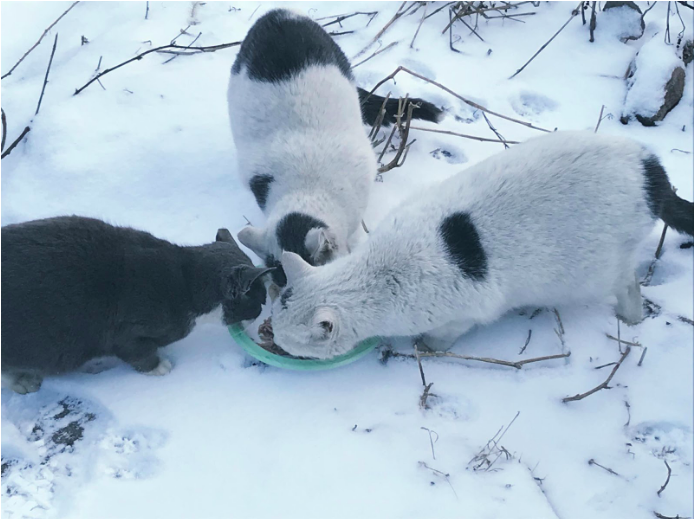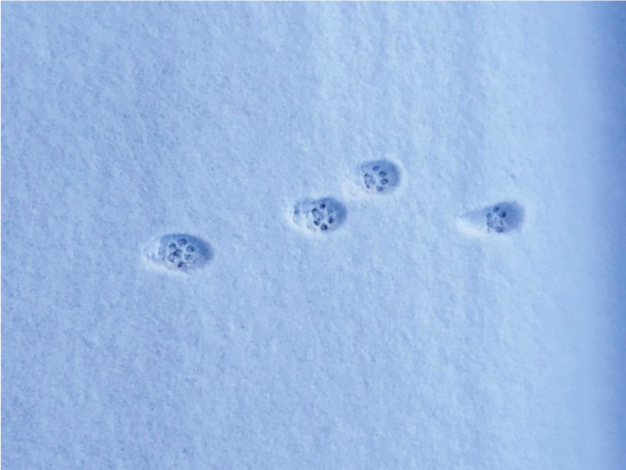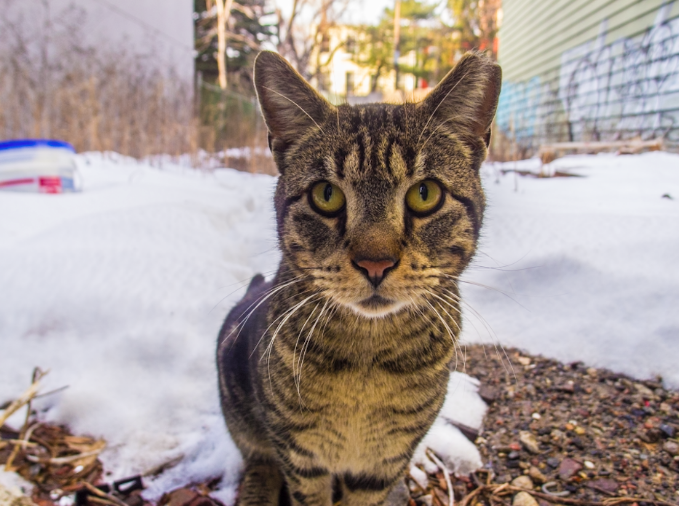
Stray and feral city cats: elusive and charming, they are the most interesting characters on our nighttime walk home from the subway; they have their own Broadway musical; and they all have a life story. Some strays, like the character, Mittens, in 2008’s Disney movie Bolt, are former house cats who have tragically been abandoned by their families, left to fend for themselves with no survival skills. Some are feral from birth, and have no desire to be tamed or kept by a human. Some would happily adjust to home life with a human family if given the chance. Some live in human-assisted colonies, some find shelter on their own. But they all have to find a way to stay warm and fed during New York City’s brutal winter months.

How can we humans help our four-legged fellow New Yorkers? Some Greenpoint residents like Jan Lorenzen and Margaret Richardson take a hands-on approach, sheltering ferals in their backyard with chicken wire-scrapwood huts. But there are other ways to assist your furry neighbors during this cold season. Two local organizations, neighborhood feline group Greenpoint Cat Club and no-kill adoption center BarcShelter, give us the story on street cats and the humans who care for them. Responses have been edited for clarity.

GoGreenBK: What are dangers to outdoor cats in the winter?
Chris Cobb, Greenpoint Cat Club: The biggest danger to the stray and feral cats is gentrification. There are a lot of great people that volunteer to feed cats and to manage colonies in the area, but construction projects encroach on the space where the cats live. The other major source of danger for cats are the humans that leave them outside in the first place.
GoGreenBK: How do cats stay warm outside?
Rop Vazquez, BarcShelter: Cats have a way of keeping their body temperature in check and ability to adjust. Those that cannot will move to a location to hide to keep themselves warm. Many will find lit windows and cry loud enough until someone takes them in, which is their winning strategy. Be aware that many cats will go hide in the hood of cars, especially after it has been warmed up, so we tell everyone to bang on the hood of the car to scare ferals/strays taking solace inside. Regardless of how acclimated a feral is to the winter season, they can still freeze like all wild animals. So they have to stay dry, or fall victim to hypothermia.

GoGreenBK: Other than fostering, adopting, and/or caring for a cat for the rest of its life, what can humans do to help?
Rop Vazquez, BarcShelter: People who notice ferals and want to help can make a temporary shelter for them by getting a big sturdy box, leaving it somewhere that is covered from the weather, and lining it with dried grass or blankets. Water is also important to strays and ferals. Snow is not a proper solution for dehydration. Cats also need more boost in their calorie intake over the winter, so put out some cat food for them. Take any anti-freeze away and wipe off any drops of it, animals are attracted to the smell of anti-freeze and find its taste sweet, but it is very toxic to cats.
GoGreenBK: Anything else you want us to know?
Chris Cobb, Greenpoint Cat Club: if a cat has one ear slightly cut or “tipped’, it has been neutered already. It is a universal sign and makes it easier for people to tell at a glance.
It’s very common for cats who are stuck outdoors to have health problems. When that happens, somebody has to catch the cat, take it to a vet, and then go through a long process of trying to help it find a home. Often feral cats cannot be indoor cats because they are wild. So, the best way to help is to donate either cat food or money. If people see cats, contacting a cat rescue organization is a good first step. Smaller cat groups and individual feeders are already spending all of their money on cat food and supplies. Supporting these people would be a big help.
GoGreenBK: On that note, what organizations can we contact to help save these cats?
Chris Cobb, Greenpoint Cat Club: If people see cats, contacting a cat rescue organization is a good first step. There is a fantastic cat adoption program in Williamsburg every Sunday at Muddy Paws (which also helps to find homes for dogs).
Rop Vazquez, BarcShelter: BarcShelter is a no-kill shelter. Please be advised that no-kill shelters are generally small and do not always have space. When we receive a young animal with behavior issues, chances are they will not get adopted right away or at all. And this will take up a space in our shelter until they naturally pass away or get a home.
There are lots of feral colonies with human guardian angels. The city also runs its own no-kill feral colonies. In addition, the Mayor’s Alliance works with all no-kill shelters (like BarcShelter) in NYC to save strays, and started Animal Alliance NYC, a program to house feral cats that are not suitable in human homes: http://animalalliancenyc.org/feralcats/ Hotline – 212-330-0033.
* * *
More Resources:
- A comprehensive list of all shelters & rescue groups the mayor’s office works with.
- Greenpoint Cat Club is a monthly meeting of people in North Brooklyn who are interested in trying to help the feral and stray cats that roam the streets in North Brooklyn. If you’re interested in learning more, the Greenpoint Cat Club will meet on December 30.
- The next Muddy Paws Cat Adoption Event is this Sunday.
- North Brooklyn Cats, West Street Whiskers, and Whiskers-a-Go-Go are good organizations to contact if you see an animal in need of help.


